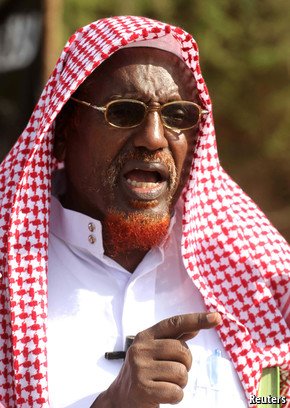The Economist
AT FIRST glance Somalia’s foreign-backed government seems to be doing well. In the past two years it has benefited from the recovery of the country’s main cities by African Union peacekeepers after two decades of clan warfare and intermittent Islamist rule. And on June 29th the government pulled off something of a coup by locking up the grandfather of militant Islamism in Somalia, Sheikh Hassan Dahir, better known as Aweys. The red-bearded 78-year-old may be the victim of infighting in the Shabab, an al-Qaeda-linked movement that is steadily losing power but can still cause mayhem with suicide-bombings here and there.
 But appearances may mislead. President Hassan Sheikh Mohamud, appointed last year to much acclaim, is accused of employing warlords to assert his authority over the fragmented country. A report due to be submitted to the UN Security Council by independent experts says the government used rival militia leaders to gain control of Kismayo, the second city. The report alleges that Mr Mohamud, who gets a lot of cash from Western governments, has been “co-opting clan warlords”, some of them linked to the Shabab.
But appearances may mislead. President Hassan Sheikh Mohamud, appointed last year to much acclaim, is accused of employing warlords to assert his authority over the fragmented country. A report due to be submitted to the UN Security Council by independent experts says the government used rival militia leaders to gain control of Kismayo, the second city. The report alleges that Mr Mohamud, who gets a lot of cash from Western governments, has been “co-opting clan warlords”, some of them linked to the Shabab.
The region around the capital, Mogadishu, remains more or less in government hands. But southern Somalia is engulfed in a power struggle. Five rival militia leaders proclaim themselves “president of Jubaland”, a region that includes Kismayo. At least 40 people were killed last month when clashes broke out between them. The most powerful is Sheikh Ahmed Madobe, whose Ras Kamboni brigade helped the Kenyan army to drive the Shabab out of Kismayo last year. With Kenya’s implicit backing, he has refused to let representatives from the federal government enter Kismayo. His main rival is Barre Hiraale, another warlord who has sometimes sided with the Shabab.
Source:The Economist


Leave a Reply